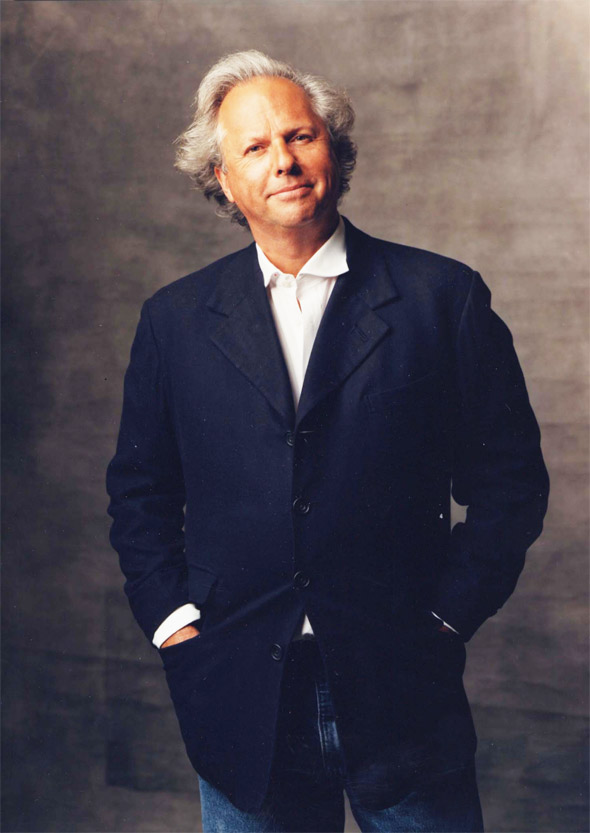
If he hadn’t been raised in middle-class Ottawa, Graydon Carter’s rise to the apex of New York high society wouldn’t be out of place in the pages of a Horatio Alger novel. As writer and editor for such esteemed publications as Time, Life, and the both revered and irreverent Spy Magazine, his acerbic wit and stunning insight into the social politics of New York have served Carter well throughout his impressive career. His current tenure as editor-in-chief of Vanity Fair has brought the magazine numerous awards.
Carter is also a producer of successful documentaries such as The Kid Stays in the Picture, as well as an author and editor of best-selling books. His next venture is Bella’s Umbrella, a children’s book that he has both written and illustrated for the iPad. Carter has since gone from celebrity sniper to celebrity styler, curating the pages of Vanity Fair by day and entertaining its subjects by night at two of the hottest restaurants in Manhattan, The Waverly Inn and Monkey Bar.
You grew up in Canada, what drove you to come to New York?
Movies, books, and magazines drew a portrait of New York for me. I had no interest in moving to Los Angeles, minor interest in moving to London, and a lot of interest in moving to Paris, but New York seemed the most possible route, not to getting out of Canada… well, yes, to getting out of Canada.
After decades in the magazine business, how did you suddenly find yourself in restaurants?
Well, like so many good things in life it was happenstance. In 2004 I was having dinner at Elaine’s with my friend [producer] Roberto Benabib – he has a house around the corner from me in the West Village. We knew that The Waverly Inn had come up for sale and since neither of us had a clue about running a restaurant we decided to buy it.
And you didn’t have a lot of restaurant experience?
I had a lot of experience on the customer aspect of the business; I’ve a very extensive education in that respect. Our restaurants are very much designed for the experience of the person coming in and having a meal.
Back to magazines, how have you adapted to the rise of the Internet in regard to publishing and how do you see Vanity Fair’s continued role as a standard bearer of culture and literature?
Well there’s two aspects to the Internet, one is that it’s a subject worthy of coverage, and over the last ten years we’ve done a lot on the principal figures of the Internet to the avatars of this new medium. At the same time it’s a challenge for how you distribute your magazine. What we do at Vanity Fair is to try and tell a story, and our pieces are long and involve a lot of reporting and photography, and for the time being that’s not available for free on the Internet. So our position is reasonably secure for the time being; our circulation is actually up over the last ten years.
Well VF.com seems to be a popular destination and certainly looks like it’s growing and succeeding in that space.
I find the Internet side of the business as much fun – and more immediate fun – than the monthly because you can react very quickly. I said to make it like a version of Spy Magazine and to an extent it is.
I’m sure the restaurant business has its twists and turns as well.
The food business has changed over the last five years in that when we opened the Waverly, the idea was that you aimed for one-star food and provided a fun bar and fun atmosphere. Over the last two or three years the bar for the food has risen so that you have to aim to be doing two and three-star food. Ken Friedman, our new partner in the Monkey Bar, is vital to that because he’s such a food person. He has [this] way; he finds a great manager and zeros in on that person, and finds a great chef and zeros in on that person. He managed to get all the people he wanted for the restaurant.
What beverage do you enjoy making for people?
I make a decent margarita, I make a very decent martini, and I can pour a decent bottle of wine.
What’s in store for the first time Monkey Bar visitor?
It’s a great looking room; it’s very evocative of an earlier New York. The restaurant has been around since the thirties; it’s been home to Tallulah Bankhead and Truman Capote, [and] Tennessee Williams. The hotel in which the restaurant is located used to be called “the easy lay;” it’s actually called the Elysée, because you could have dinner and then take a room upstairs. I think it’s cleaned up its act, but it’s still a very raffish
looking room.
For more details on the Monkey Bar, click here.
– Adam Pollock

